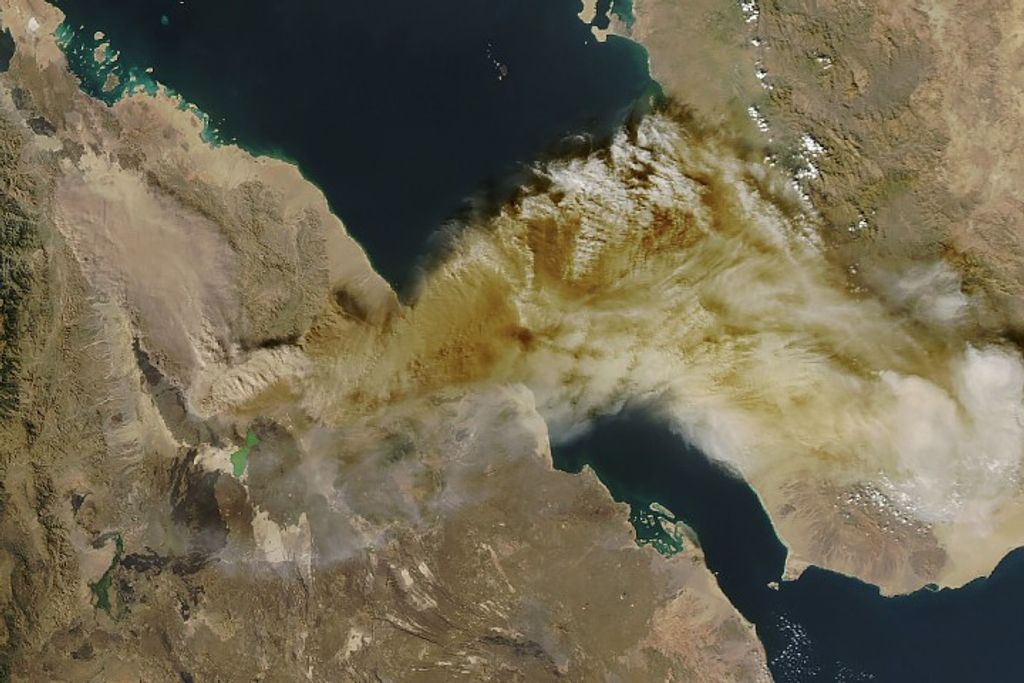1 min read
Mars Opposition — Dec. 13, 1990

The images in this color composite were acquired on December 13, 1990, when Mars was 85 million kilometers (53 million miles) from Earth. This was two and one half weeks after opposition, when the angular size of Mars was about two thirds of its maximum at the best oppositions. The north pole is located near the center of the bright bluish clouds at the top of the image.
When the images were taken it was mid-summer in Mars' southern hemisphere. The thin atmosphere of Mars appears relatively clear of dust over most of the planet. However a thick canopy of clouds obscures the icy north polar regions, as is expected during fall and winter in that hemisphere. As on Earth, the periphery of this polar hood region is the locale of intense storm systems which migrate through northern mid-latitudes. Details of the cloud structures in such fronts can be seen in the HST images. Extensive thin clouds in the southern hemisphere are perhaps harbingers of a south polar hood which may form as the martian season slowly changes to fall in the southern hemisphere.
The large, dark, "shark's fin"-like feature which dominates this face of Mars is called Syrtis Major Planitia. This was the first feature identified on the surface of the planet by early terrestrial observers in the Seventeenth Century. It was used by Christian Huygens to measure the rotation rate of Mars - a martian day is about 24 hours and 37 minutes.
Arabia Planitia, the bright region to the west of Syrtis is thought to be bright because of a thin layer of dust (perhaps amounting to a few meters in thickness) deposited on its surface. This region is heavily cratered, and several of these craters can be discerned in the image.
The bright region to the east, Isidis Planitia, is a 1000 kilometer wide (620 miles) impact basin formed as a result of a large meteoroid collision more than two billion years ago. The basin is bright because it is also thought to be covered with fine dust.
Syrtis Major, which slopes about six kilometers from Arabia down into Isidis, is thought to be dark due to deposits of coarse, dark sand on its surface. Relatively strong winds apparently blow upslope (from east to west), scouring the fine dust from the surface and carrying the dust into Arabia. Viking spacecraft images (obtained from 1976 to 1980) have shown the crest of Syrtis Major to be the location of one or more volcanic vents. Volcanic activity in this area of Mars is thought to have ceased about 2.5 billion years ago, and weathering of the dark volcanic basaltic rock is the source of the dark sand currently covering Syrtis Major.
To the south of Syrtis Major is the bright Hellas Planitia basin. About 1800 kilometers across and nearly eight kilometers deep, it was formed about 3.5 billion years ago by the impact of a large asteroid. Normally the basin is either filled with fog and clouds or the site of prevalent dust storms. This is one of the rare seasons when the weather in Hellas is calm and its surface is visible.
- Object NameObject NameA name or catalog number that astronomers use to identify an astronomical object.Mars
- Release DateMarch 18, 1991
- Science ReleaseNASA’s Hubble Space Telescope To Monitor Changes On Mars
- CreditScience Release Credit: Dr. Philip James/University of Toledo, NASA
Share
Details
Last Updated
Aug 17, 2025
Contact
Media
Claire Andreoli
NASA’s Goddard Space Flight Center
Greenbelt, Maryland
claire.andreoli@nasa.gov































